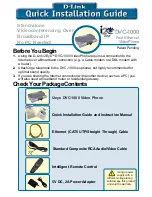
Protective earthing
This equipment must imperatively be connected to a permanent earth protection
installed according to current legislation.
Installation of the mains power
The mains power must be installed as close as possible to the unit and must be easily
accessible. The power supply lead is used as the master switch.
Free board slots
It is essential that empty board slots are guarded with the appropriate expansion
slot covers for full electromagnetic shielding, the safety of people working nearby (in
the presence of hazardous voltages) and the prevention of fire propagation (from inside
the unit).
Lead and Lithium batteries
There is a risk of explosion if the batteries are incorrectly replaced. Only use
batteries of identical type, or manufacturer recommended equivalents. Discard used
batteries according to the battery manufacturer's instructions.
Power supply
Due to the presence of hazardous voltages, the rear metal panel can only be
removed by qualified personnel.
If it is necessary to carry out work on a power supply unit, first disconnect the mains cable from
the system as well as any external EPS48 power connections that may be connected. Then
remove the rear metal panel of the power supply block and disconnect the batteries.
High leakage current
A
permanent
earth
connection
is
essential
before
making
TRT/TNV-3
telecommunication network connections.
In
the
case
of
a
poor
earth
connection,
it
is
MANDATORY
to
disconnect
the
telecommunications accesses before reconnecting the equipment to earth. It is then necessary
to verify that all the connections have been made correctly.
Before removing any board that provides access to a telecommunications
network of class TRT/TNV-3, make sure you disconnect the links. Reconnect the links
once the board is re-inserted.
Installation of DECT bases
For further information on recommendations relating to the exposure of the public to the
electromagnetic field, refer to "Installation of DECT bases".
1.2.1.3
Declaration of Conformance With Directives
This equipment is designed to be connected to the public telephone network using the
appropriate interfaces.
Chapter
1
!
1-2
Summary of Contents for OmniPCX Office
Page 1: ...Installation Manual Release 9 0 October 2012 ...
Page 8: ... P 8 6 Q 8 7 R 8 7 S 8 8 T 8 8 U 8 9 V 8 9 W 8 9 0 6 ...
Page 14: ...Chapter 1 1 6 ...
Page 19: ...2 3 Installation 2 3 1 Overview ___change begin___ 2 5 ...
Page 48: ...Chapter 3 3 18 ...
Page 176: ...Chapter 4 4 128 ...
Page 178: ...Figure 5 1 Virtual Key Functions for Operator Sets in KeySystem mode Chapter 5 5 2 ...
Page 179: ...Figure 5 2 Virtual Key Functions for Manager Assistant Normal sets in KeySystem Mode 5 3 ...
Page 181: ...Figure 5 4 Virtual and Physical Add on Key Functions for Attendant Sets in KeySystem mode 5 5 ...
Page 182: ...Figure 5 5 US only Virtual Key Functions for Operator Sets in KeySystem Mode Chapter 5 5 6 ...
Page 183: ...Figure 5 6 US only Virtual Key Functions for Manager Assistant Sets in KeySystem Mode 5 7 ...
Page 184: ...Figure 5 7 US only Virtual Key Functions for Normal Sets in KeySystem Mode Chapter 5 5 8 ...
Page 185: ...Figure 5 8 Virtual Key Functions for Operator Manager Assistant Normal Sets in PABX Mode 5 9 ...
Page 186: ...Figure 5 9 US only Virtual Key Functions for Operator Sets in PABX Mode Chapter 5 5 10 ...
Page 187: ...Figure 5 10 US only Virtual Key Functions for Manager Assistant Sets in PABX Mode 5 11 ...
Page 190: ...Chapter 5 5 14 ...
Page 213: ...settings are overwritten when configured PBXs are added to a network 6 23 ...
Page 214: ...Chapter 6 6 24 ...
Page 220: ...Chapter 7 7 6 ...











































